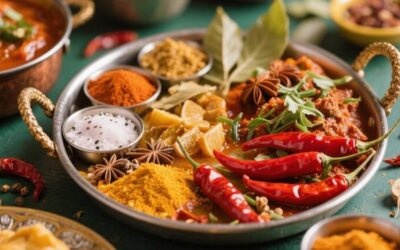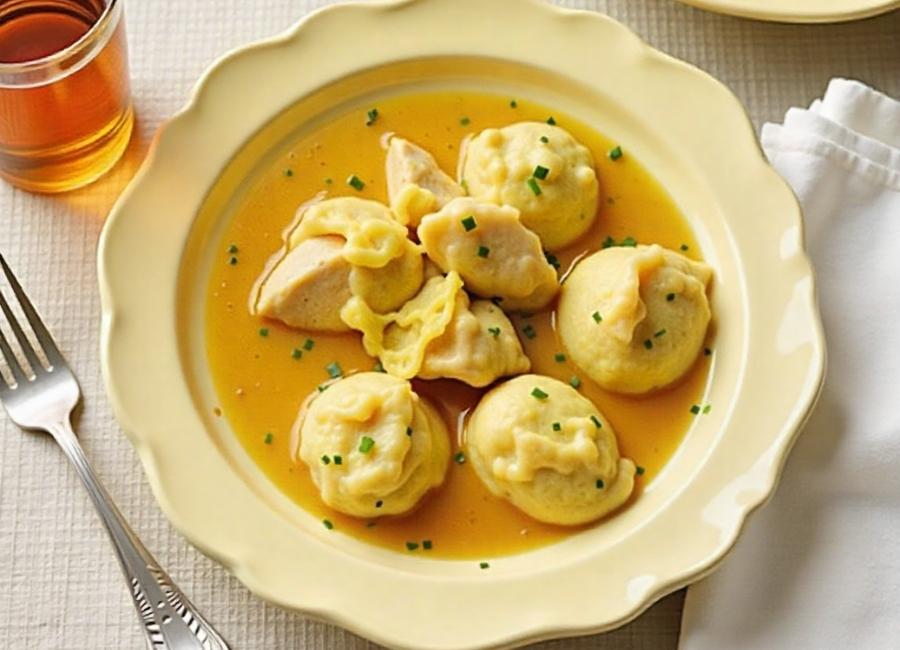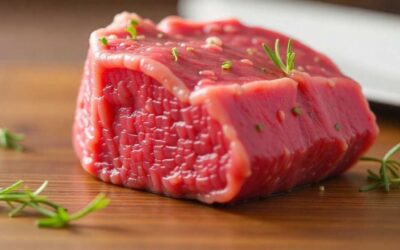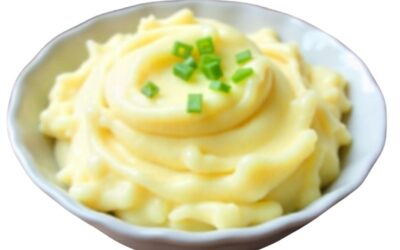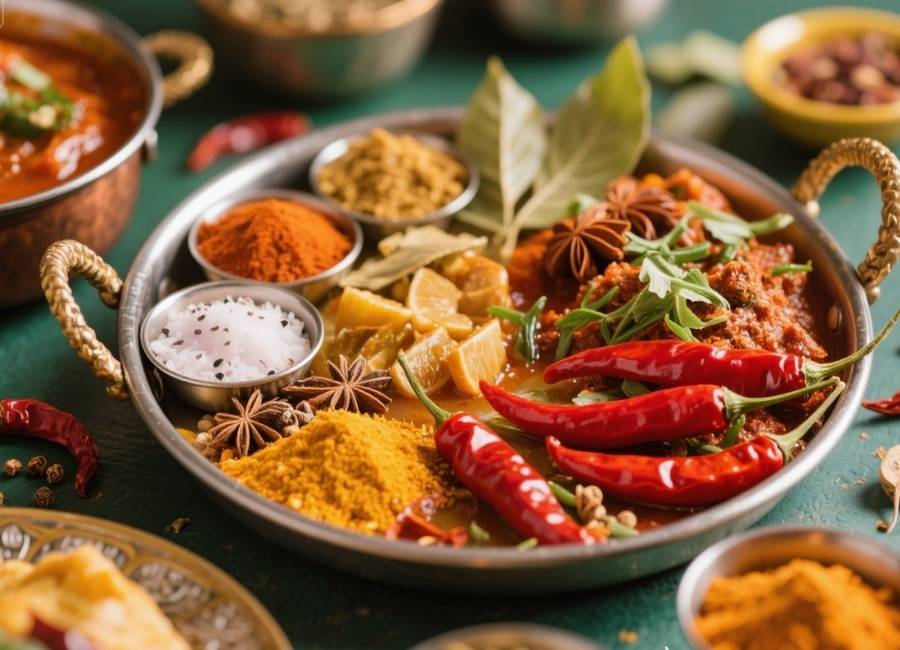Indian cuisine is famous for its bold and complex flavors, but it’s most known for one thing: spice. Many people wonder what makes Indian food so hot. The answer is not just one ingredient but a combination of spices and cooking techniques.
This post will explain what makes Indian food spicy. You will learn about the key spices used, why they are so common in Indian cooking, and how the level of spice can vary. This information will help you understand and appreciate the depth of Indian cuisine.
The Role of Spices in Indian Food
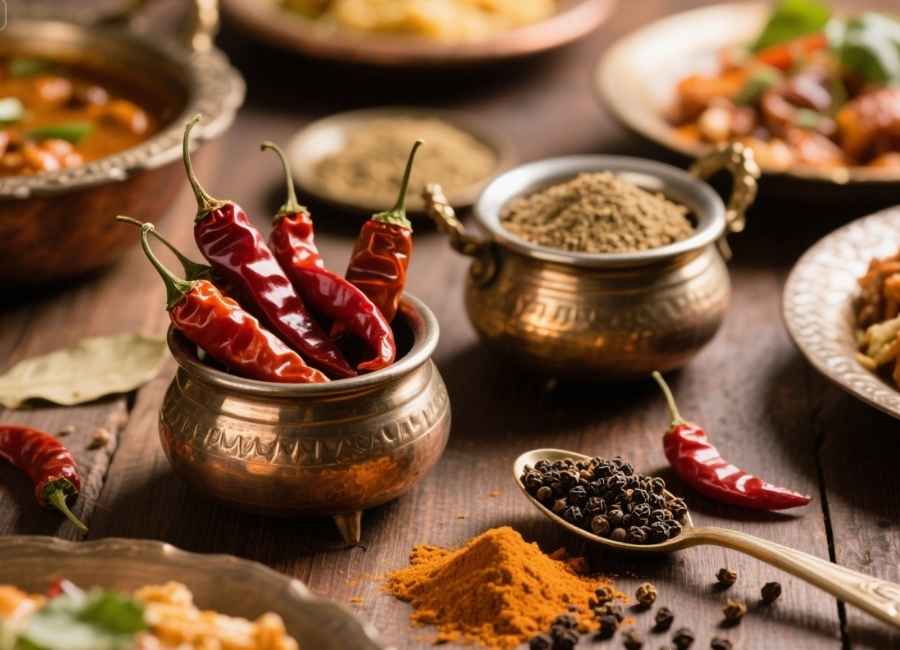
Spices are the heart of Indian cooking. They do more than just add heat; they provide aroma, color, and a wide range of flavors. Understanding these spices is the first step to understanding why Indian food has its signature kick.
Key Heat-Inducing Spices
Several key ingredients contribute to the heat in Indian dishes.
- Chilies: The most significant source of heat comes from chilies. India is one of the world’s largest producers of chilies, with hundreds of varieties available. (India: chili production volume by state 2024, 2024) Green chilies are often used fresh and provide a sharp, immediate heat. Red chili powder, made from dried red chilies, offers a more sustained, burning sensation. Varieties like the Bhut Jolokia, also known as the “ghost pepper,” are among the hottest in the world and are used in specific regional dishes. (Why Ghost Chilli or Bhut Jolokia, once the world’s hottest chilli pepper, is losing its sting, 2024)
- Black Pepper: Before chilies were introduced to India, black pepper was the primary source of heat in the region. (What Makes Indian Food Spicy? The Science, Spices & Stories Behind the Heat, n.d.) It provides a milder, more pungent type of spiciness compared to chilies. It’s a key ingredient in spice blends like garam masala.
- Ginger and Garlic: While not spicy in the same way as chilies, both fresh ginger and garlic add a pungent, warming quality to dishes. They form the base of many curries and provide a foundational layer of flavor.
- Cloves and Cinnamon: These spices add a warm, sweet, and spicy flavor. While they don’t produce the burning sensation of chilies, they contribute to the overall warmth and complexity of a dish.
The Science of Spiciness
The heat from chilies comes from a compound called capsaicin. (Hot Peppers: Muy Caliente, 2013) When you eat something containing capsaicin, it binds to pain receptors in your mouth. Your brain interprets this signal as a burning sensation. The more capsaicin a chili contains, the hotter it will taste. The Scoville Heat Unit (SHU) scale measures this level of heat. (Petruzzello & Melissa, 2025) For example, a bell pepper has 0 SHUs, while a jalapeño has between 2,500 and 8,000 SHUs. The Bhut Jolokia can exceed 1 million SHUs. (Scoville scale, n.d.)
Why Spices are Essential to Indian Cooking
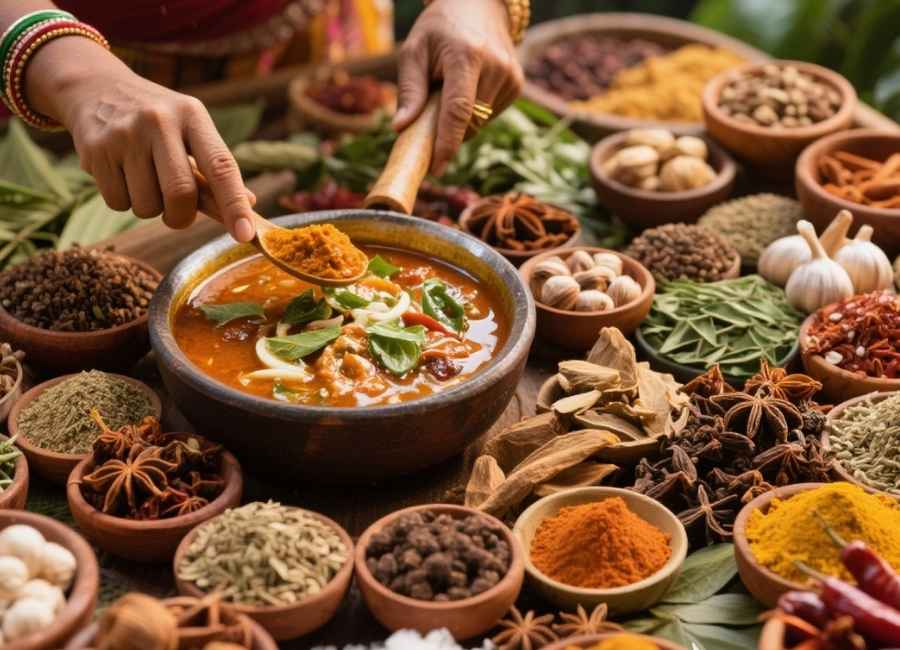
The use of spices in India is not just about taste; it’s also deeply rooted in tradition. There are historical and cultural reasons for their widespread use.
Historical and Geographic Factors
India’s climate made it a natural hub for growing a variety of spices. (Kerala’s Ideal Climate | Spice Cultivation | Monsoons and Agro-climatic Zones, n.d.) For centuries, spices have been a valuable commodity, and India has been at the center of the global spice trade. (Khari Baoli, n.d.) This availability made spices an integral part of everyday cooking.
Historically, spices also had practical benefits.
- Food Preservation: In a hot climate without refrigeration, food spoils quickly. Many spices, including turmeric and cloves, have antimicrobial properties that help preserve food and prevent illness. (Evrendilek et al., n.d.)
- Medicinal Properties: Traditional Indian medicine, known as Ayurveda, has utilized spices for thousands of years to treat various ailments. (The Role of Herbs & Spices in Ayurvedic Cuisine, n.d.) Ginger is known to aid digestion, turmeric has anti-inflammatory properties, and chili peppers can help clear congestion. (Does Spicy Food Help with Digestion?, 2017)
Cultural and Regional Diversity
India is a vast country with a diverse array of culinary traditions. The level and type of spice vary significantly from one region to another.
- North India: Northern cuisine, renowned for dishes such as butter chicken and rogan josh, is typically rich and creamy. The heat is often balanced with yogurt, cream, and nuts, making it flavorful but moderately spicy.
- South India: The food in southern regions, such as Andhra Pradesh and Tamil Nadu, is often significantly spicier. (Which Culture Has the Spiciest Food? The Ultimate Heat Showdown, 2025) Dishes like Hyderabadi biryani and Chettinad chicken are renowned for their intense heat, which stems from a generous use of red and green chilies. (Menu, 2025)
- East and West India: In the east, mustard oil and seeds add a pungent heat. (Mustard Seed, n.d.) In the West, coastal regions use coconut to temper the spice, while other areas, like Rajasthan, are known for fiery dishes like Laal Maas (red meat curry). (Laal maas, 2025)
How Spice Levels Can Be Managed
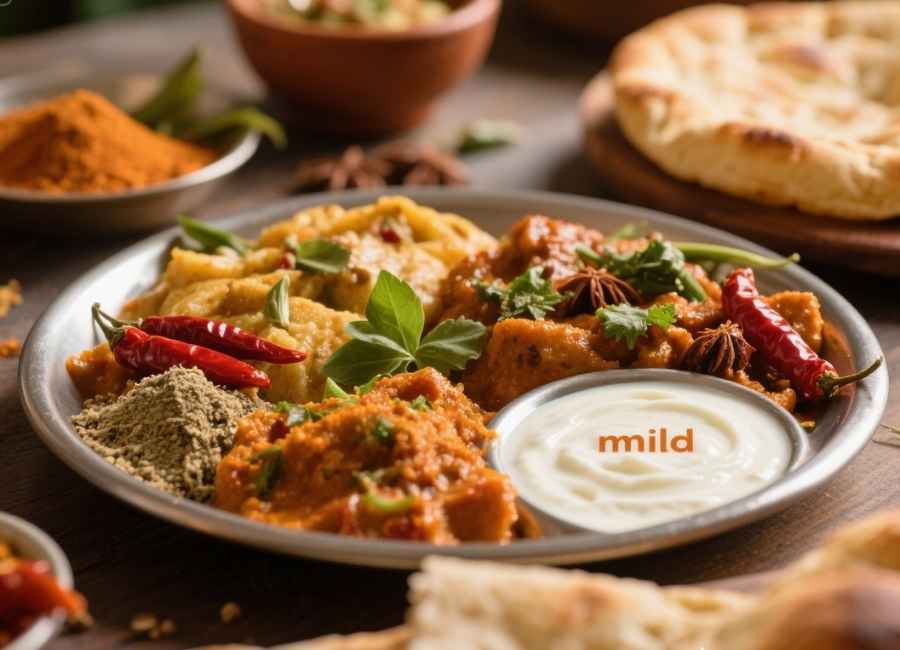
Not all Indian food is overwhelmingly hot. The level of spice can be adjusted to suit different palates. If you’re new to Indian food or prefer milder flavors, there are ways to enjoy it without the intense heat.
- Ask for Milder Options: When ordering at a restaurant, you can almost always request a dish to be prepared mild, medium, or hot.
- Use Dairy to Cool Down: Dairy products, such as yogurt, milk, or cream, contain a protein called casein that helps break down capsaicin and reduce the burning sensation. (Farah et al., 2023, pp. 147-157) This is why dishes are often served with a side of raita (a yogurt-based dip).
- Focus on Flavor, Not Just Heat: Many Indian dishes prioritize a balance of flavors, rather than relying solely on heat. Look for dishes that are described as aromatic or flavorful rather than just “spicy.”
Boost Your Understanding of Indian Cuisine
Spices are what make Indian food unique. The heat from chilies, combined with the complex flavors of other spices, creates a multi-layered culinary experience. The reasons for this are rooted in history, geography, and culture.
Understanding what makes Indian food spicy is the first step to appreciating its depth. Whether you like it hot or mild, there is a wide world of Indian cuisine to explore.
Ready to expand your business’s market visibility? Contact us for proven SEO strategies that deliver results.










